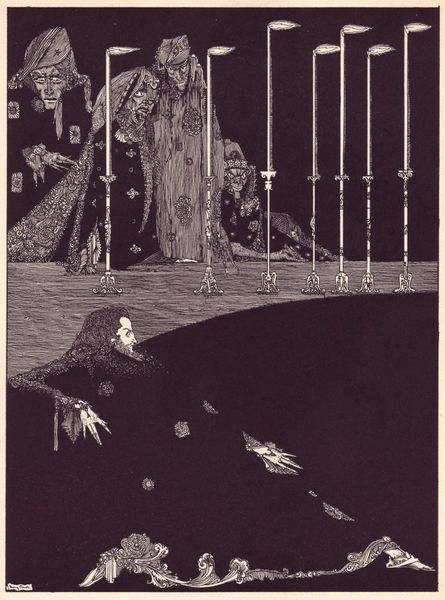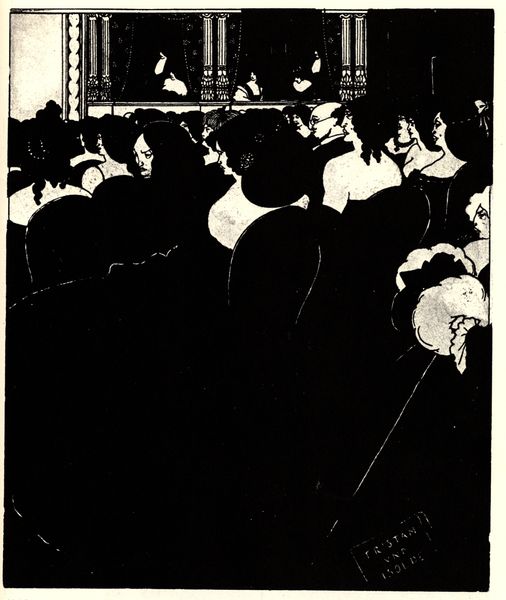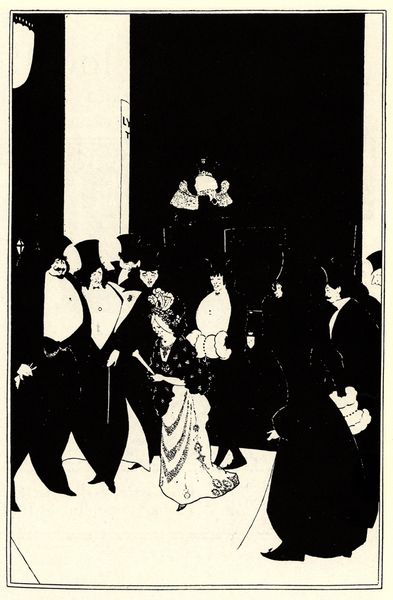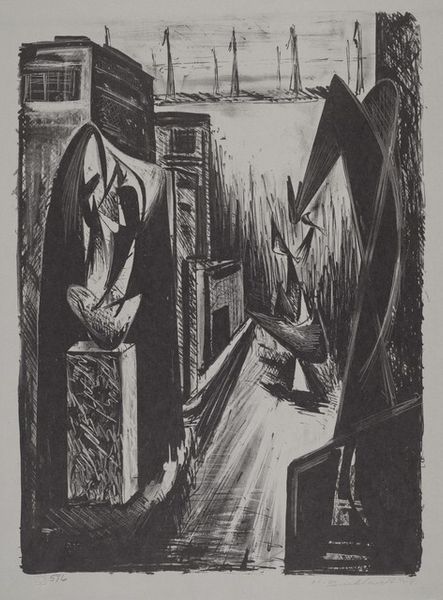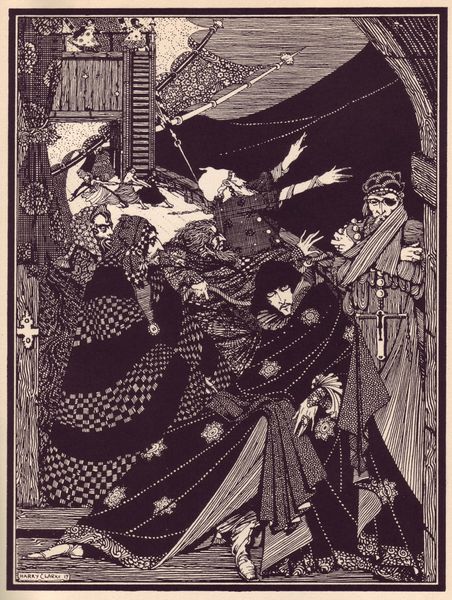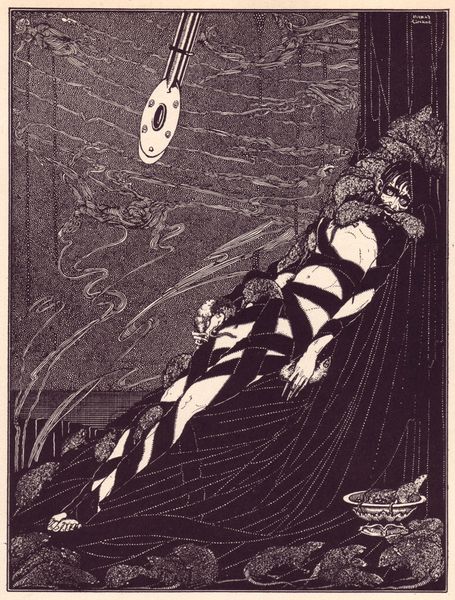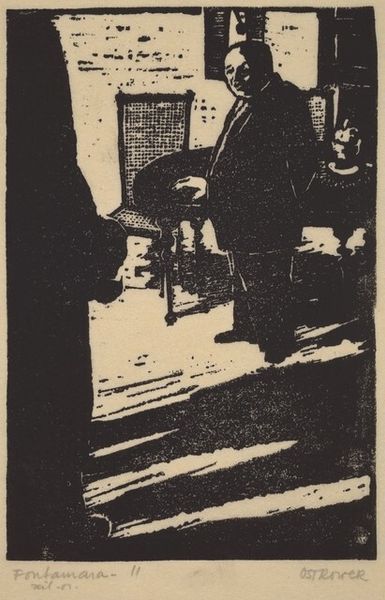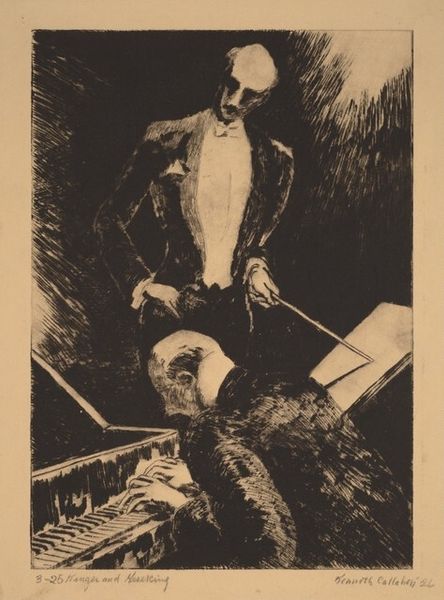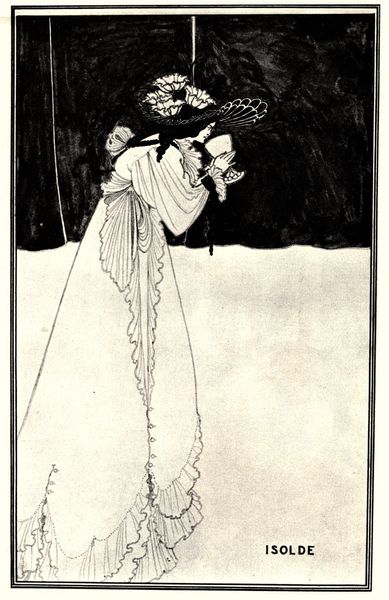
Copyright: Public domain
Editor: Here we have Harry Clarke's 1923 print, "Tales of Mystery and Imagination by Edgar Allan Poe," done in ink. It's a rather macabre image, unsettling with its use of heavy blacks and grotesque figures. How do you interpret this work? Curator: Clarke's illustrations for Poe delve into the anxieties of his time. The overt morbidity can be seen as a reflection on the trauma of World War I and its impact on the collective psyche, wouldn’t you agree? The hyper-stylized figures are undeniably eerie. Who do you think these figures represent in relation to the illustrated Poe story? Editor: Perhaps they embody societal fear of the "other" and the disintegration of traditional structures post-war. Are you suggesting that Clarke’s approach mirrors the societal breakdown reflected in Poe’s narratives? Curator: Precisely. Consider how the print subverts traditional beauty standards, questioning who holds power. Is this illustration solely about horror, or might there be social commentary woven within? I'm interested in your views as an art student. Editor: The stark contrast and emphasis on the grotesque could critique the establishment, laying bare uncomfortable truths hidden beneath a veneer of civility. What exactly did that artistic symbolism mean? Curator: Exactly! Clarke transforms Poe’s literary exploration of societal decay into a visual statement about a world grappling with moral ambiguities and hidden injustices, echoing today’s pressing questions. What will you take away from analyzing Clarke's social implications and subversion of cultural norms? Editor: It gives me a framework to re-evaluate familiar narratives and examine hidden commentary embedded in other artwork. Thank you.
Comments
No comments
Be the first to comment and join the conversation on the ultimate creative platform.
